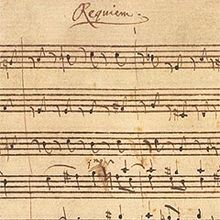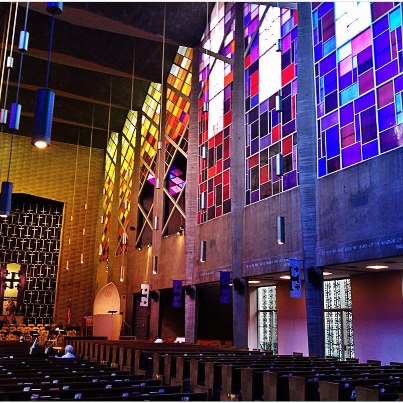 Last Sunday I had the opportunity to perform Mozart’s Requiem and I will also be performing it again this weekend. Over the years I have played the Requiem several times and always enjoy the experience. I think this is partly because I spent so many years singing in a choir and have a love for vocal music. It also begins with a bassoon solo!
Last Sunday I had the opportunity to perform Mozart’s Requiem and I will also be performing it again this weekend. Over the years I have played the Requiem several times and always enjoy the experience. I think this is partly because I spent so many years singing in a choir and have a love for vocal music. It also begins with a bassoon solo!
The Requiem Mass in D minor was left unfinished at the time of Mozart’s death on December 5th 1791 and was completed by Franz Xaver Süssmayr.
The Requiem is scored for 2 basset horns, 2 bassoons, 2 trumpets , 3 trombones, timpani, violins, viola, cello, double bass, and organ. It also includes soprano, alto, tenor, and bass soloists and a choir.
Here is a photo of the First United Methodist Church of Glendale where the Requiem was performed on March 3, 2013.
Photo credit by Maciej Flis
Program notes by Dr. Christine Lee Gengaro, Ph.D., originally appeared in the LACO booklet and used with permission of the author.
Mozart’s Requiem was commissioned anonymously by Count Franz Walsegg to commemorate his wife’s death. Walsegg sent a mysterious emissary to make a deal with Mozart: the anonymous benefactor would pay half of his generous fee up front, and pay Mozart the other half when the work was completed. Walsegg used the emissary probably because he wanted to pass the work off as one of his own, and bolster his reputation as a composer. Mozart worked hard on the piece, evidently devoted to its completion (and the rest of the money, as Mozart was chronically in financial straits). He suffered with an illness in September, but continued to work, but in late November, he became too sick to continue. After ailing for two weeks, Mozart died on December 5th.
The opening movement of the work, the Requiem aeternam, was left complete. Mozart had written out of the vocal parts of the Kyrie, but left just sketches for the orchestral parts. The Sequence and Offertory were in a similar condition, although he composed the Sequence only as far as the eighth measure of the Lacrimosa. The rest of the movements—Sanctus, Benedictus, Hosanna, Agnus Dei—were not composed. This left Mozart’s wife, Constanze, in a bit of a bind. Without Walsegg’s second payment, Constanze struggled to support herself and her children. Turning to different composers to complete the unfinished work, Constanze found only one man who could and would help her. Franz Xaver Süssmayr, Mozart’s assistant, completed the work in 1792.
Although critics have cited problems with Süssmayr’s work, including lackluster musical ideas and errors in harmony, it is the Süssmayr completion that most people know and indeed, love. Mozart’s incomplete raw material was enough for Süssmayr, who had worked with Mozart for years, to put together something worthwhile. To be fair, though, what he left behind was breathtaking, drawing some of its drama from Mozart’s operatic style. Oddly, then, we note that the soloists are treated more as a small chorale than as soloists (with the exception of the baritone’s brief solo in the “Tuba mirum”). The instrumentation is notable as well, its darker tone color due to a lack of high woodwinds and an absence of French horns, which are so good at adding warmth. Trombones—an instrument that was at this time associated with religious music—feature prominently.
In his musical ideas, it seems Mozart drew inspiration from J.S. Bach, as evidenced by the use of polyphony in general, and of fugues in particular. It also seems that G.F. Handel was in the forefront of his mind, as he had done some revisions to Messiah in 1789 for the musician and diplomat, Baron van Swieten. (As a child, Mozart would visit van Swieten every Sunday and play through the older man’s collected scores of Bach and Handel.) There is an unmistakable similarity between Mozart’s main theme for the Kyrie fugue and Handel’s chorus “And with his stripes we are healed” from Messiah. Of the works that Süssmayr composed from scratch, most recognize the Agnus Dei as approaching Mozart’s high level of quality. At the end of the piece, Süssmayr repeated some of the music from the opening, apparently fulfilling Mozart’s wishes. The piece then comes full circle, ending where it began, like the never-ending pattern of birth and death. Mozart’s Requiem, in sum, features elements of old styles with newflourishes. Mozart had never composed a piece quite like this before, and we can speculate how his style might have changed after this, but we will never know for sure.
Lacrimosa
http://www.youtube.com/watch?v=glNmBsYPKrw
Have a great weekend!









